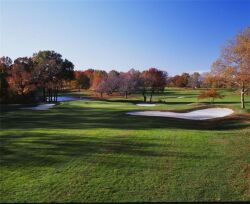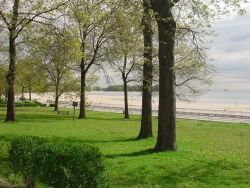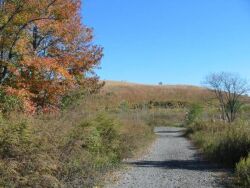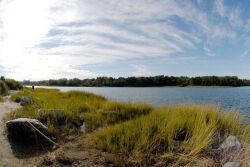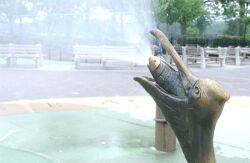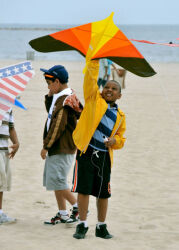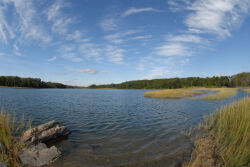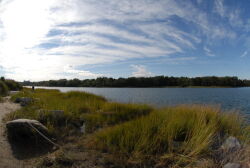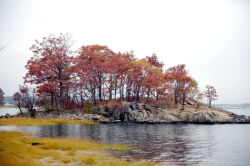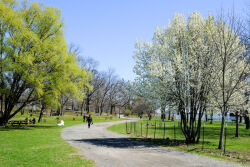Pelham Bay Park
The Meadow
Pelham Bay Park’s Meadow, along with its woodlands, marshes, and islands, is an important, prominent natural resource for New York City. Meadows and fields are the first stage of a natural evolution called succession; the process in which open spaces eventually develop into woodlands and forests. Grasses and wildflowers, known as “pioneer species,” appear first and are eventually followed by leafy shrubs and taller trees. New trees and species gradually fill the land and produce the layers of a forest -- the forest floor, the herb layer, the shrub layer, the understory layer, and the canopy later. Natural and human intervention, such as a flood, fire, development, or pollution, can prevent a meadow becoming woodland.
The Meadow covers 25 acres of grassland and open space, and thrives with a wide variety of plant and animal life. Shrubs and wildflowers such as switchgrass (Panicum virgatum), goldenrod (genus Solidago), little bluestem (Andropogon scoparius), wild strawberry (Fragaria virginiana), and sesame grass (Tripsacum dactyloides) thrive in the open sunlight of the Meadow. The forest adjacent to the Meadow is filled with White Poplar (Populus alba), Black Cherry (Prunus serotina), Pin Oak (Quercus palustris), Crab Apple (Malus coronaria), Smooth Sumac (Rhus glabra), Dogwood (genus Cornus) and Bayberry bushes (Myrica pensylvanica).
This open field is home to a multitude of winged and footed critters including the Ring-Necked Pheasant (Phasianus colchius), the American Woodcock (Scolopax minor), a bird uncommon to New York City. Cottontail rabbits (Sylvilagus floridanus) flourish in the meadow’s environment. The Meadow also cradles the only known examples of the Amphipoea erepta ryensis, an extremely rare subspecies of moth.
The Meadow is located between Orchard Beach and Rodman’s Neck. The area around The Meadow changed substantially with the construction of Orchard Beach. Parks Commissioner Robert Moses’s (1888-1981) ambitious 1936 plan to join Rodman’s Neck to Hunter Island cost $8 million and added 115 new acres of land, using over 3 million cubic yards of sanitation landfill. Construction crews added white sand from the Rockaways in Queens and Sandy Hook, New Jersey, to the beach at a rate of 4,000 cubic yards a day.
The Meadow has picnic areas for the public and is one of the last grasslands in New York City. Along with places like Staten Island’s Blue Heron Park, Van Cortlandt Park’s Vault Hill, and Brooklyn’s Marine Park and Floyd Bennett Field, the Meadow of Pelham Bay Park is one of New York City’s most intimate connections with the natural world.
Check out your park's Vital Signs
Clean & Safe
Green & Resilient
Empowered & Engaged Users
Share your feedback or learn more about how this park is part of a
Vital Park System

Know Before You Go

Contacts
Pelham Bay Park Administrator's Office: (718) 430-1891
Bartow-Pell Mansion Museum: (718) 885-1461
Park Enforcement Patrol: (718) 430-1815
Pelham Bay & Split Rock Golf Course: (718) 885-1258
Turtle Cove Driving Range: (718) 885-2646
Orchard Beach Nature Center: (718) 885-3466
Urban Park Rangers: (718) 548-0912
Events and General Parks Information: 311
Bronx Equestrian Center: (718) 885-0551
Friends of Pelham Bay Park: (718) 430-4685
Bronx Recreation: General Information: (718) 430-1825
Bronx Recreation: Special Events Permits: (718) 430-1848
Bronx Recreation: Sports Permits: (718) 430-1840
Bronx Recreation: Tennis Permits: (718) 430-1848

